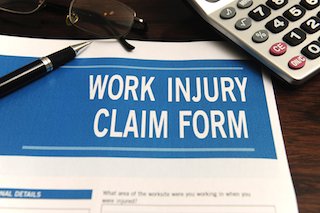Unfortunately, it’s hard for employers not to feel a twinge of pain when reports show that over half of them overpay for workers’ compensation insurance by 15% to 50% due to unnecessary surcharges.
It’s an enormous drain on employers’ bottom lines, which often goes unnoticed (or improperly addressed) and is regularly swept under the rug by insurance carriers at renewal time.
So where do surcharges come from? Right off the bat, work comp surcharges arise when the Experience Modification Factorincreases, often unnecessarily. This Experience Modification Factor, commonly known as an “e-mod” by insurance professionals, is an extremely important factor used by carriers to adjust workers’ compensation premiums. Every company has an e-mod, unless they self-insure their work comp insurance.
The e-mod is a crucial benchmark that employers and their insurance agent need to pay attention to as it has a significant impact on the company’s work comp premiums. The bad news? It often goes unmanaged at the carrier level. And this mismanagement means huge surcharges.
While commonly managed in the construction trades (because general contractors tend to frown upon hiring companies with a bad e-mod), e-mods on the whole go relatively unaddressed in other industries. Agents need to make sure their employer clients know where their e-mod stands, as this all-important injury barometer has the single largest impact on their work comp premiums. Bottom line: What they don’t know will hurt them.
It works like this: The e-mod is nothing more than a numerical expression of a company’s accident and injury record compared with the average for that particular employers’ industry. In other words, if a company is the leading manufacturer of widgets, then they get a score and are ranked among other companies that manufacture widgets.
The better their results, the better their score and the less they pay for insurance. The worse the results, the worse their score and the more they pay for insurance. For example, let’s look at the hypothetical results of three similarly situated companies.
All three of these companies have the…
• Same insurance company
• Same payroll
• Same types of employees
• Performing the same work
And yet all three companies pay vastly different work comp premiums due to their e-mod surcharge status.
- Company A has an e-mod of .75, which means they’ve implemented best-in-class work comp surcharge controls. They pay $45,000 annually for their work comp insurance, and certainly much less than their direct competitors.
- Company B has an e-mod of 1.00 which means this company has implemented some, yet not all work comp surcharge controls. As a result, this company pays $11,250 more than Company A, a 25% surcharge more than their direct competitor.
- Company C has an e-mod of 1.25 meaning they are paying 25% more than Company B and a full 50% more than Company A. You can practically feel the pain.
The all-important questions for your employer clients would be:
• Which company – A, B or C – would you be when compared against your competitors?
• Do you know your e-mod score and why it is that way?
• How long has your e-mod been inflated?
These are all questions you should seek an answer to for your clients if you don’t know already. Stay in the dark and your client is sure to bump into higher premiums.
Data used to determine scores often incorrect
The data used to generate a company’s e-mod score spans over a three-year period, and there are many “hands in the cookie jar” at the insurance company level responsible for data that ends up being used to calculate the e-mod. Unfortunately, this information is regularly incorrect and rarely gets audited by insurance companies. The problem being the insurance companies do not do the calculation themselves and it is actually done by an outside organization.
All this being said, how confident are your employer clients that their e-mod score is correct? When was the last time you or your client looked into whether or not the data used to calculate their e-mod was up-to-date and correct? If you’re not looking into this as the agent, don’t assume the insurance carrier or the client is, either. Odds are the client is getting an inflated score that they do not deserve.
What can you do about it?
The best way to stay on top of things is not to get lulled to sleep by an average e-mod score. Your client should know the lowest possible (lower is better) score available and continually strive for it. Driving the e-mod down to its minimum is the most profitable way to slash work comp surcharges. But first you and your client need to know what their current e-mod score is and the status of their current surcharge. If you don’t, the odds are that the client is leaving significant dollars on the table.
Dustin Boss is a Certified Risk Architect and Insurance Agent with Ottawa Kent. He designs, builds and implements risk management systems for companies without the luxury of a full-time risk manager on staff. He can be reached at 616.457.1320 and dboss@ottawakent.com













